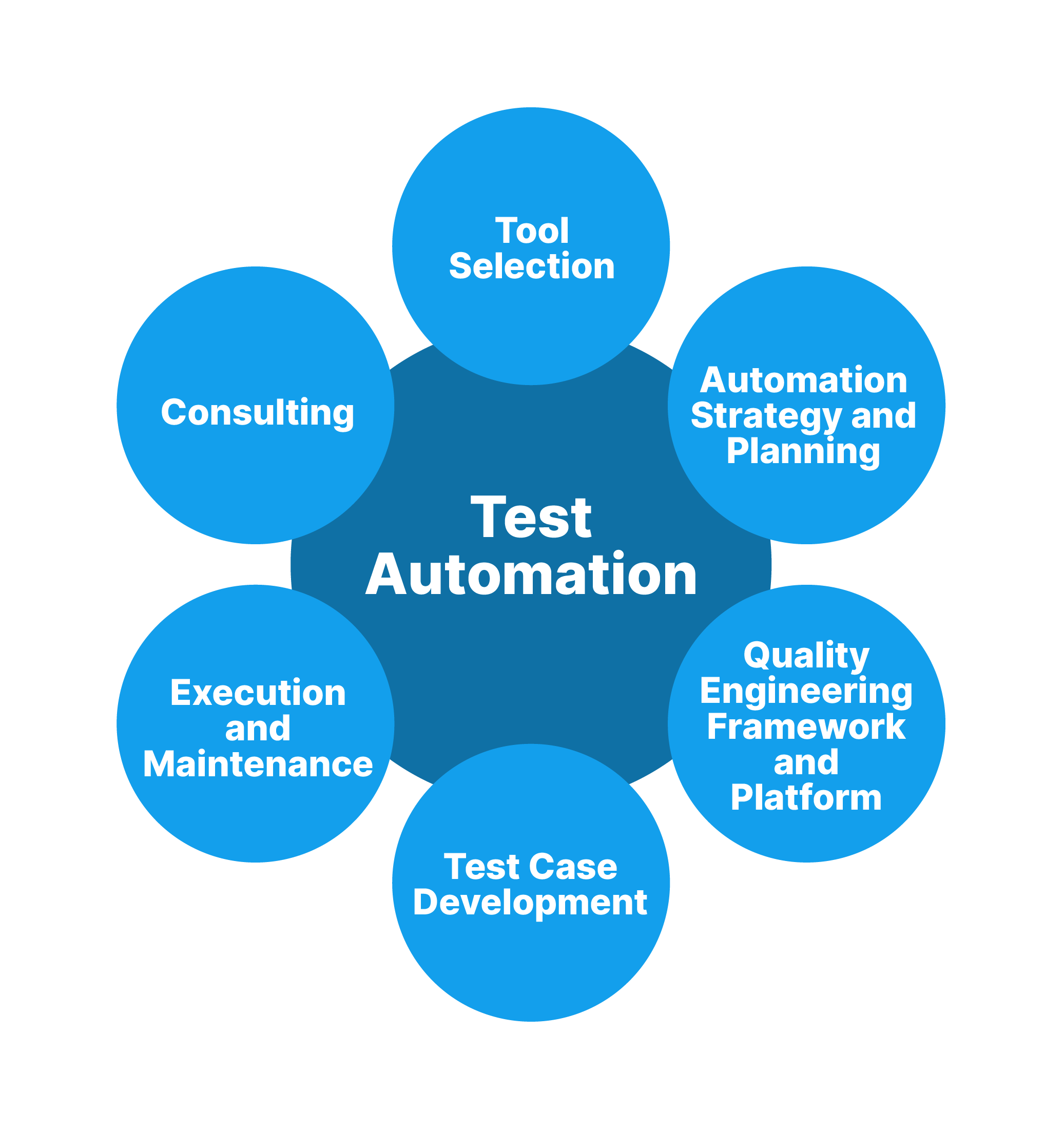Effective Automation Testing: Enhancing Software Reliability and Rate
Effective Automation Testing: Enhancing Software Reliability and Rate
Blog Article
Guaranteeing Success in Automation Examining: Secret Metrics, Challenges, and Solutions Every QA Group Should Know
In the world of software quality control, the landscape of automation testing is ever-evolving, requiring a precise technique to guarantee smooth operations. Secret metrics function as the compass assisting QA groups with the substantial terrain of examination automation, clarifying development and locations for enhancement. Nonetheless, challenges impend big, commonly casting shadows on the course to success. By recognizing these obstacles and implementing reliable remedies, QA groups can navigate via complexities with finesse. The trip to mastering automation screening is paved with nuances that need a keen eye for tracking, evaluation, and constant improvement. automation testing. As the market moves ahead, the pursuit for optimum efficiency in automation screening remains a constant search, urging QA teams to furnish themselves with the understanding and approaches important for victory.
Value of Key Metrics
Understanding the significance of crucial metrics is essential for assessing the efficiency and performance of automation screening processes. Secret metrics work as measurable measures that offer useful insights right into numerous facets of the screening process, such as test coverage, examination implementation time, flaw thickness, and examination situation efficiency. By evaluating these metrics, QA teams can identify traffic jams, inefficiencies, and locations for enhancement within their automation testing framework.
One critical facet of crucial metrics is their capability to track progress and check the general wellness of the testing procedure (automation testing). They allow stakeholders to make informed choices based on data-driven understandings, which can result in more reliable testing methods and better resource allocation. Furthermore, vital metrics can aid teams set practical objectives, measure the success of automation campaigns, and show the ROI of automation testing initiatives

Typical Difficulties Faced
Obstacles commonly experienced in automation screening procedures can substantially impact the overall performance and efficiency of QA groups. Automation screening may not cover all elements of screening, such as use and user experience testing, which still call for manual treatment. Conquering these difficulties needs correct planning, tactical test instance option, robust maintenance processes, appropriate resources, and a clear understanding of the constraints of automation screening.
Reliable Solutions for Obstacles
To deal with the obstacles come across in automation testing, applying reliable options is vital for enhancing the efficiency and performance of QA teams. One key solution is to spend in robust training programs for QA groups to guarantee they have the required skills to properly use automation tools. Training can link understanding gaps, boost understanding of automation frameworks, and enhance scripting capacities, eventually causing much more reliable test production and execution.
One more vital option is to establish clear interaction channels within the QA group and with other stakeholders, such as programmers and job supervisors. Effective interaction helps in straightening expectations, sharing development updates, and quickly addressing concerns or obstructions that might develop during the automation testing process.

Monitoring and Analysis Methods
Executing reliable tracking and analysis strategies is reference important for ensuring the success and efficiency of automation screening procedures. Additionally, examining test results and metrics gives important understandings right into the quality of the software application being tested and the efficiency of the screening strategy.
One secret strategy in monitoring and analysis is using control panels that consolidate relevant metrics and KPIs in a visually easily accessible format. These dashboards use a thorough summary of test implementation standing, test coverage, flaw trends, and other critical information. Consistently evaluating and examining these control panels can aid QA teams make notified choices, prioritize tasks, and enhance testing efforts.
Furthermore, applying automated signals and notifications based upon predefined limits can boost aggressive surveillance and prompt treatment. By establishing up signals for efficiency inconsistencies or examination failings, groups can attend to concerns without delay and avoid them from rising. Generally, tracking and evaluation strategies play a crucial function in making sure the performance and success of automation screening campaigns.
Continual Enhancement Techniques
Enhancing the effectiveness of automation testing procedures demands the regular improvement of methods and techniques. Continuous enhancement techniques are essential for QA teams to adapt to progressing innovations and deliver top quality software application products. One essential approach to boosting automation screening processes is to perform routine reviews and retrospectives. By analyzing previous screening cycles, teams can identify bottlenecks, inadequacies, and locations for improvement. Executing feedback loops and incorporating lessons learned right into future screening frameworks can yield substantial renovations gradually.

Final Thought
Finally, it is crucial for QA teams to understand the essential metrics, difficulties, and options in automation testing to ensure success. By carefully keeping an eye on and examining data, applying reliable options to typical obstacles, and constantly boosting techniques, QA groups can optimize their testing procedures and provide premium software. Following these practices will eventually bring look at this now about more reliable and reliable automation screening methods.
By analyzing these metrics, QA groups can identify traffic jams, inadequacies, and locations for enhancement within their automation testing framework.
Furthermore, key metrics can help groups set sensible goals, measure the success of automation initiatives, and show the ROI of automation testing efforts.
Challenges frequently run into in automation screening processes can substantially affect the overall effectiveness and efficiency of QA teams. Automation screening may not cover all elements of testing, such as use and individual experience testing, which still call for hand-operated treatment.In verdict, it is critical for QA groups to understand the essential metrics, difficulties, and solutions in automation testing to guarantee success.
Report this page